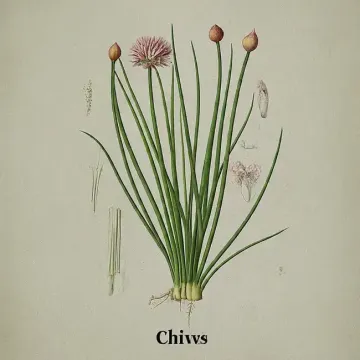Chives (Allium schoenoprasum) are a versatile and hardy perennial herb that belongs to the onion family. They are one of the easiest herbs to grow in the home garden, providing a mild onion flavor that enhances a variety of dishes. With their attractive, grass-like foliage and delicate purple flowers, chives also add visual appeal to the garden.
History of Chives
Chives have been cultivated for thousands of years, with origins tracing back to Asia and Europe. They were popular among ancient civilizations such as the Romans and Greeks, who appreciated their culinary and medicinal qualities. Chives were introduced to North America by early European settlers, and today they are widely grown around the world for both culinary and ornamental purposes.
Health Benefits of Chives
Chives offer a range of health benefits due to their rich nutrient content. They are an excellent source of vitamins A and C, which support immune function and skin health. Chives also contain antioxidants like quercetin, which may help reduce inflammation and lower the risk of chronic diseases. Additionally, chives have been linked to improved digestion and cardiovascular health due to their mild diuretic properties and ability to lower blood pressure.
Culinary Uses of Chives
Chives are highly valued in the culinary world for their delicate onion flavor, which is milder than that of regular onions or garlic. They can be used fresh or dried in a variety of dishes, including:
- Salads: Chopped chives add a subtle onion flavor and a pop of color to green salads, potato salads, and pasta salads.
- Soups: Chives are often used as a garnish for soups, such as potato leek soup, cream of mushroom soup, and vichyssoise.
- Egg Dishes: Chives pair well with eggs and can be sprinkled on scrambled eggs, omelets, quiches, and frittatas.
- Sauces and Dips: Chives are a common ingredient in herb butters, cream cheese spreads, and yogurt-based dips like tzatziki.
- Baked Potatoes: Chopped chives are a classic topping for baked potatoes, often accompanied by sour cream and butter.
Growing Tips for Chives
Chives are among the easiest herbs to grow, making them ideal for both beginner and experienced gardeners. Here are some tips to ensure a successful chive harvest:
- Planting: Chives can be grown from seeds or transplants. If starting from seed, sow them indoors 6-8 weeks before the last frost or directly in the garden after the danger of frost has passed. Transplants can be planted in the garden in early spring.
- Location: Chives thrive in full sun but can tolerate partial shade. They prefer well-drained soil with a pH between 6.0 and 7.0.
- Watering: Keep the soil consistently moist, especially during dry periods. Chives do not require heavy watering, but they should not be allowed to dry out completely.
- Fertilizing: Chives are light feeders, so they do not require much fertilizer. A light application of compost or a balanced fertilizer in the spring will support healthy growth.
- Harvesting: Chives can be harvested as soon as they reach 6-8 inches in height. Cut the leaves about 2 inches above the ground using sharp scissors. Regular harvesting encourages new growth and prevents the plants from becoming too woody.
- Pests and Diseases: Chives are relatively pest-resistant, but they can occasionally be affected by aphids or fungal diseases like powdery mildew. Ensure good air circulation around the plants and avoid overhead watering to reduce the risk of disease.
- Dividing Plants: Every few years, chive clumps should be divided to maintain their vigor. This is best done in the spring or fall.
Conclusion
Chives are a wonderful addition to any home garden, offering both culinary and aesthetic value. With their easy-growing nature, rich history, health benefits, and versatility in the kitchen, chives are a must-have herb for gardeners of all levels. Whether you're adding them to your favorite dishes or simply enjoying their lovely flowers, chives are sure to bring joy to your garden.

